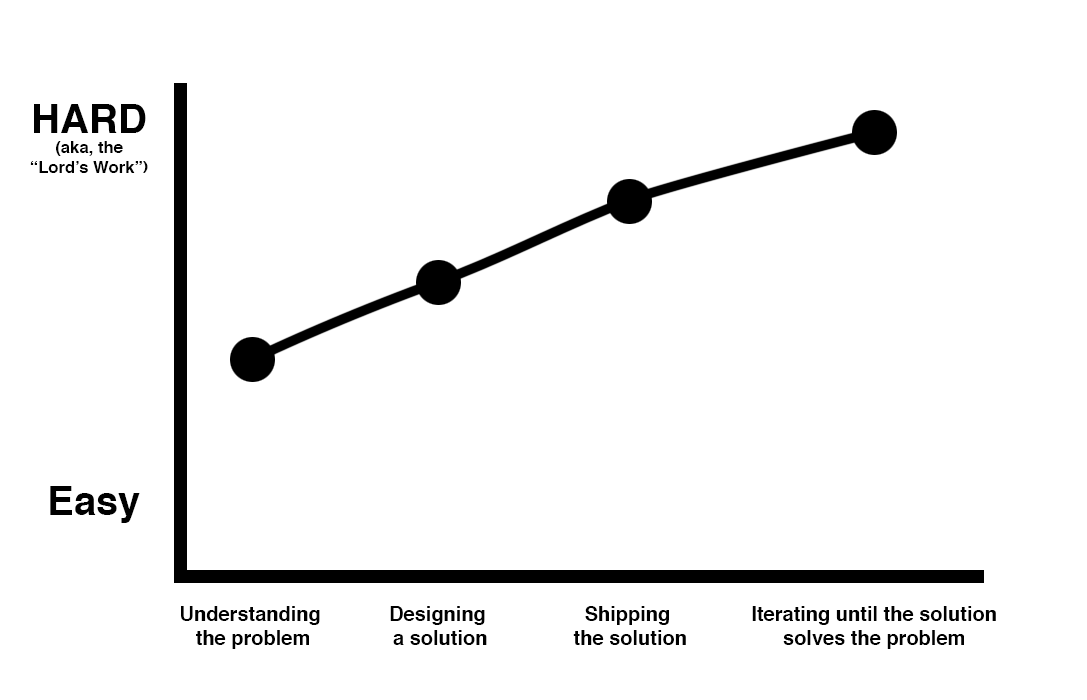Going Pro – What it takes to be a lead designer at a top startup
Over the past couple years at Designer Fund we’ve worked closely with many top startups to grow and develop their design teams. These startups build world-class products, value design, and invest heavily in their designers.
In turn, they expect ever-growing contributions from their design teams. From developing an amazing design culture to building prototypes, the days of designers only pushing pixels are long gone. If you’re looking to become a design leader at a top startup, here’s what it’s going to take.
Choose the Right Problem
Designers at top startups are often expected to go extremely deep in their company’s problem space. Unlike agencies, startups rarely look at healthcare one month and financial tools the next.
Before you even step foot inside a startup then, it is extremely important you choose one that is exploring a problem area you are passionate about. Designers that do this have the intrinsic motivation to push through tough times, the energy to inspire those around them, and the focus to go deeper than others have before them.
Go to Ship and Beyond

In one of her many wonderful Medium posts, Julie Zhuo from Facebook posted this graph about the design process experienced designers follow. It does a great job of illustrating the difficulty of the design work that happens after you ship a product at a startup.
However, it does not capture the immense time this last step can take. At top startups, designers are expected to iterate again and again until the solution solves the problem. This means that last and most difficult step can stretch over months or even years. The best designers relish in the challenge and don’t consider their job complete until the problem is solved, whether that be after 3 iterations or 300.

Build a Design Culture
Top startups are now also looking for their designers to help build a company culture that values design. This means producing a well designed product, helping other employees understand and respect design, and can even extend to designing the physical office space. To build this culture designers must:
Be Collaborative and Inclusive
Though going off to a private space and designing a perfect solution is romantic and sometimes necessary it rarely raises the design IQ of an organization. To do this designers need to find opportunities to be collaborative and inclusive where possible.
One great example is a design team that printed up their design mocks and gave out chocolate in return for feedback. This approach ended up getting them insights from unexpected places like finance and legal, and got many people in the company behind what they were building.

Be a Design Evangelist
Great designers at top startups also do a great job of evangelizing design to help people understand how to work with design and the impact it design can have. At Coursera, the Director of Design uses “All Hands” meetings to talk about product design and what the design team is working on to the entire company. This has helped increase company understanding of how design helps the business and has increased the number of people that seek to collaborate with design as a strategic partner.
Be a Design Educator
Finally great designers educate others on design. At Facebook, Mark would often walk over to me and ask me to adjust spacing, margins, color, etc. while I was designing. Instead of turning inward and getting frustrated I would use these opportunities to educate him on design and why I made specific decisions. The result has been that Mark’s design IQ is now extremely high and it’s because many designers used interactions with him as design education opportunities.
Treat Prototyping as Design
As more design moves to mobile devices designers must think along a time dimension. This means photoshop or sketch alone won’t produce the deliverables you need to communicate the work. In this new reality, prototyping is designing.
Podcast App – Scrubber Idea from Ed Lea on Vimeo
Proliferation of Prototyping Tools
Luckily we have many new tools to produce these deliverables — Framer, Origami, Form, Invision, Pixate, Flinto, and others allow designers to build higher fidelity prototypes faster. While we are seeing some companies hire people to focus exclusively on prototyping, at many top startups prototyping responsibilities are distributed amongst all the product designers.
Prototype as Final Deliverable
In some cases, designers that are further on the technical spectrum are learning objective C and designing prototypes that can be used as final code. Resources like Codepath and Xcode for Designers have made learning to produce shippable code much more accessible. Designers that really want to be dangerous should consider being able to ship usable code.
Become the Everything Designer
Startups tend to be places where you have to do whatever it takes to get the job done. Beyond expanding the realm of design skills you’ll need, they can often require you to fill other completely different roles as well. It’s not uncommon for designers to need to take on recruiting, public speaking, or even sales for brief periods of times at top startups. “Not my job” is simply not an acceptable answer for designers at top startups.
If you’re a product designer, you’ll quickly end up being an everything designer: doing brand, sound, and graphic design to fill needs as they arise.Lee Byron, Facebook
Stewart Scott-Curran who runs Creative Mornings believes designers need to go even further and seek out those opportunities. “The designers that actively seek out opportunities to contribute and influence other areas of the company become the leaders regardless of title. They are the people that others look to when problems arise or if an expert opinion is required,” says Stewart.
Always Be Learning
If you’re going to expand your abilities you’ll need to learn new skills. Luckily most top startups will support your growth and learning either with internal resources or paying for external help.
For example even early on at Facebook we had someone who would work with people to develop them as public speakers. Just two hours with him helped my public speaking and communication skills in ways years of practice hadn’t. Design leaders seek out areas for growth and lean on experts to guide their learning.
Finally, Make the Business Your Business
The more your design affects the goals of the business the more effective you’ll be. This is especially true at top startups that are often aggressively trying to grow or adapt their business to changing conditions. Golden Pencils and Webby Awards are irrelevant at companies looking to grow huge businesses; making money, growing the user base, building products people need win the day.
Adapt Constantly
Startups are already places where change is the norm but top startups tend to be growing and changing the fastest. In two years the Dropbox design team went from 3 designers to over 40. This meant communication, design process, and decision making was changing from week to week. To succeed with this kind of growth, designers must take this on as a challenge and adapt to working within this ever changing organism.

Flow with the River
In 2008, during a particularly frustrating day at Facebook, I met with one of my mentors there. I explained that we weren’t putting out high quality product design and that it was getting to me. I believe my words were “we’re putting out shit.”
He paused and said — “Ben, Facebook right now is like a raging river and you’re trying to stop the flow of water. It’s not going to work. The best you can do is direct it from side to side, but you’re going to have to be zen about everything else.”
The best designers seem to embody this attitude. They understand when and where they can affect change, and when to close their eyes, take a deep breath, and know everything will be ok.